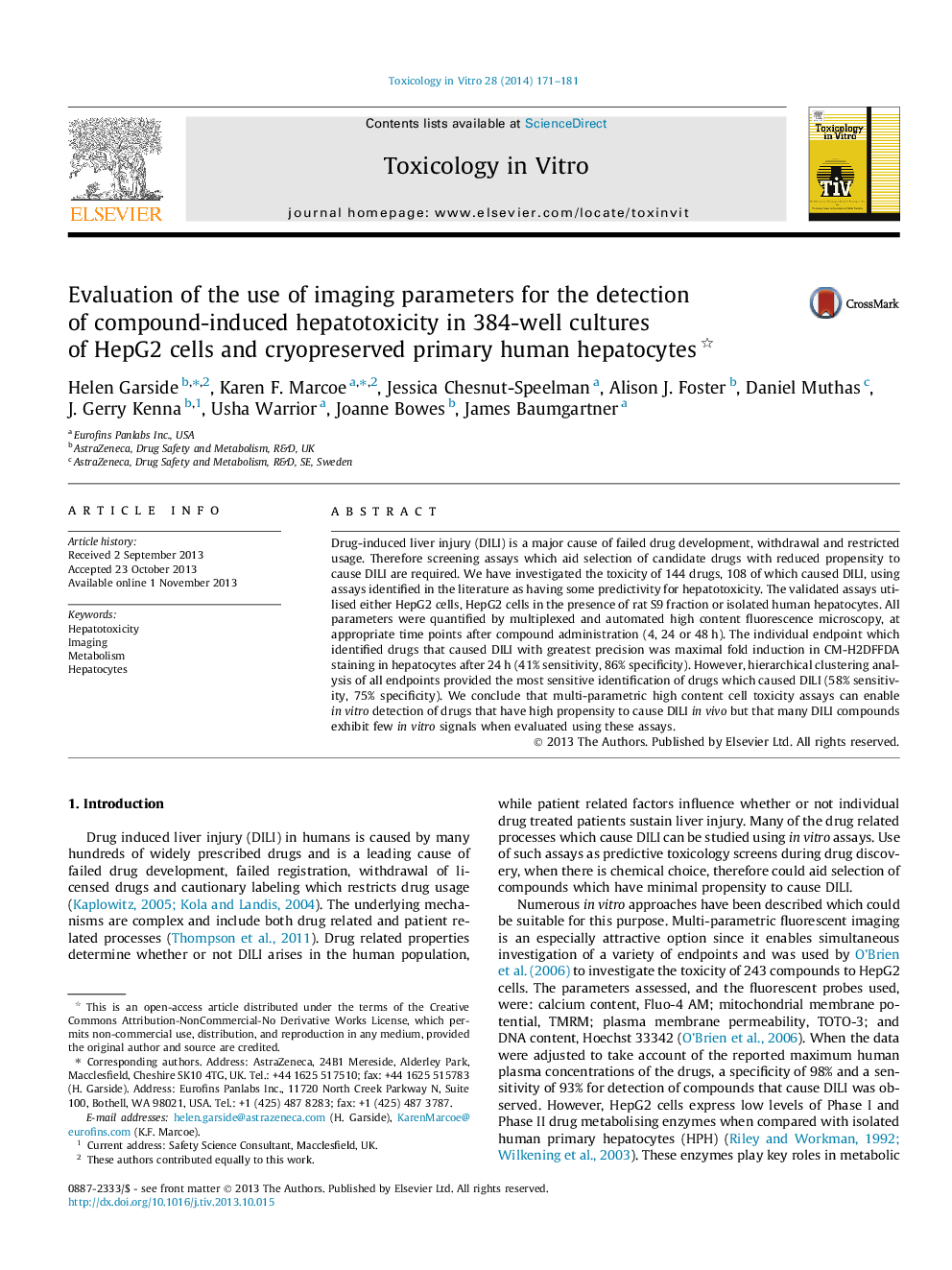| Article ID | Journal | Published Year | Pages | File Type |
|---|---|---|---|---|
| 5862430 | Toxicology in Vitro | 2014 | 11 Pages |
â¢Assessment of 108 DILI and 26 non-DILI drugs in 384-well plate assays.â¢Key parameters were measured in HepG2 cells ± rat S9 and primary human hepatocytes.â¢Hierarchical clustering of data showed the greatest sensitivity for DILI compounds.â¢Maximum DILI sensitivity was 58% indicating a need for additional in vitro assays.
Drug-induced liver injury (DILI) is a major cause of failed drug development, withdrawal and restricted usage. Therefore screening assays which aid selection of candidate drugs with reduced propensity to cause DILI are required. We have investigated the toxicity of 144 drugs, 108 of which caused DILI, using assays identified in the literature as having some predictivity for hepatotoxicity. The validated assays utilised either HepG2 cells, HepG2 cells in the presence of rat S9 fraction or isolated human hepatocytes. All parameters were quantified by multiplexed and automated high content fluorescence microscopy, at appropriate time points after compound administration (4, 24 or 48Â h). The individual endpoint which identified drugs that caused DILI with greatest precision was maximal fold induction in CM-H2DFFDA staining in hepatocytes after 24Â h (41% sensitivity, 86% specificity). However, hierarchical clustering analysis of all endpoints provided the most sensitive identification of drugs which caused DILI (58% sensitivity, 75% specificity). We conclude that multi-parametric high content cell toxicity assays can enable in vitro detection of drugs that have high propensity to cause DILI in vivo but that many DILI compounds exhibit few in vitro signals when evaluated using these assays.
